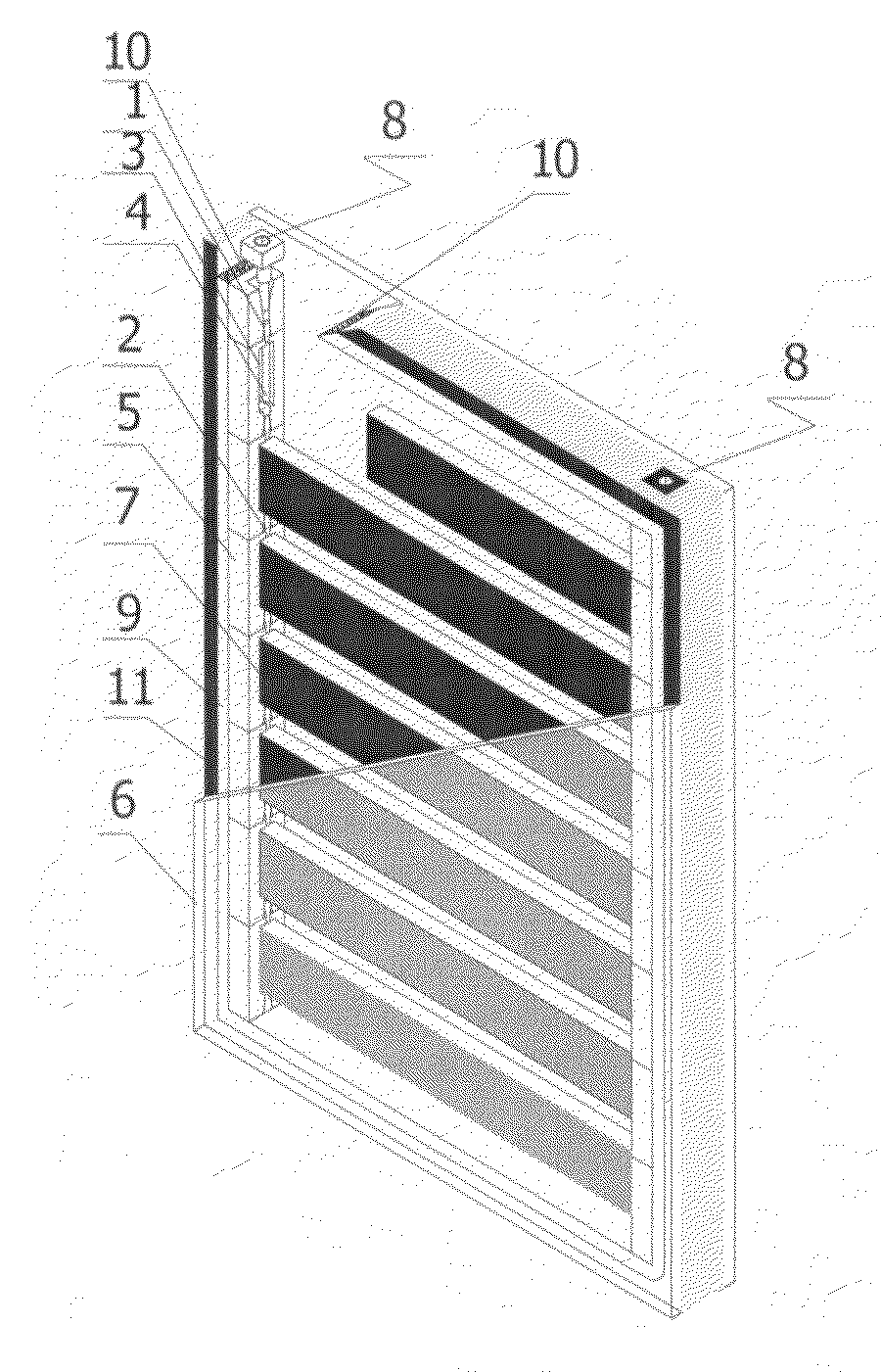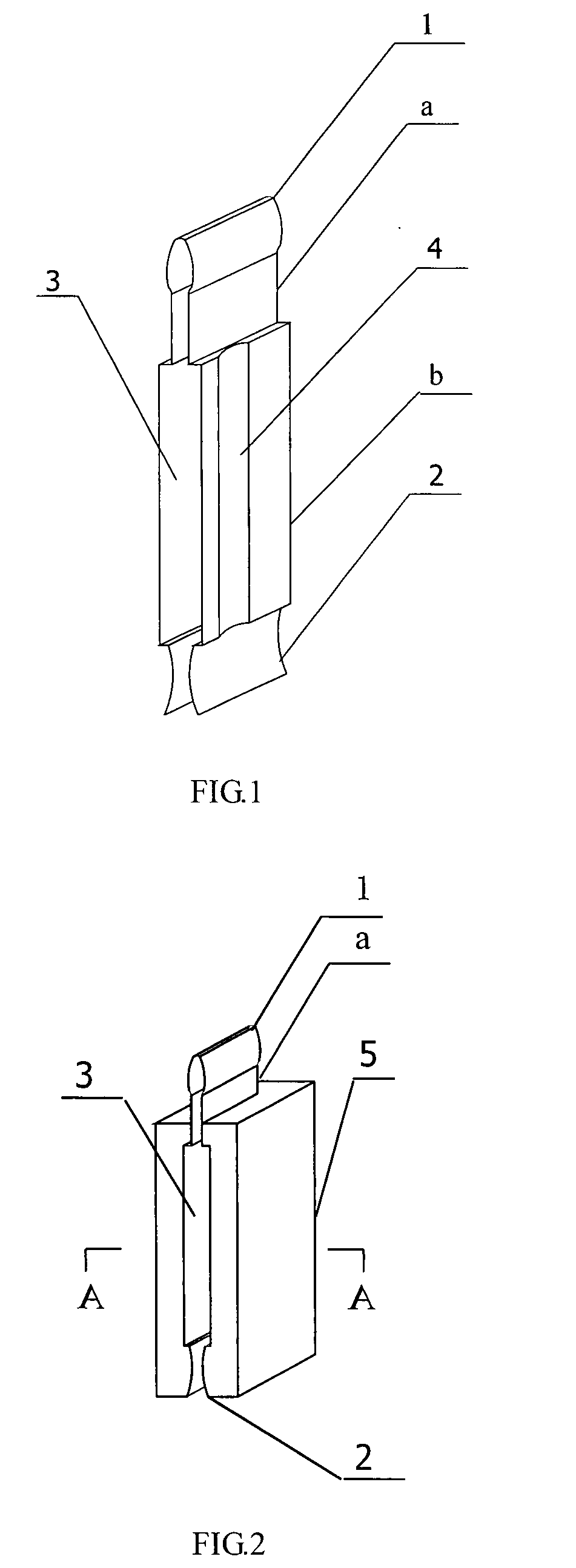Integrated photovoltaic modular panel for a curtain wall glass
a photovoltaic modular panel and curtain wall technology, applied in the direction of walls, sustainable buildings, power plants, etc., can solve the problems of increasing the number of photovoltaic panels used in the curtain wall, increasing the number of photovoltaic panels, and complicated assembly process, etc., to achieve the effect of convenient modification
- Summary
- Abstract
- Description
- Claims
- Application Information
AI Technical Summary
Benefits of technology
Problems solved by technology
Method used
Image
Examples
first embodiment
[0038]The first embodiment is a photovoltaic hollow curtain wall glass. A photovoltaic unit is formed when the solar cell strip's two ends, i.e., a positive electrode and a negative electrode, are respectively connected with a connector with a slantwise electrode plug-in socket 3′ as shown in FIG. 3 and FIG. 4. Multiple photovoltaic units, equipped with crust 5′ around the connector, composes a photovoltaic panel main body through inserting the plug 1′ into the socket 2′ just like stacking building blocks. The internal electrodes of the photovoltaic panel main body are formed with a positive electrode bar and a negative electrode bar respectively parallel connected. The left frame and the right frame of the photovoltaic panel main body are formed by stacking together multiple crusts 5′. The photovoltaic units in the photovoltaic panel main body are arranged with intervals for light transmitting. The photovoltaic panel main body can be directly installed in the inner frame of a hollo...
second embodiment
[0040]The second embodiment is a stand-alone electricity supply system. Photovoltaic arrays comprising multiple integrated photovoltaic panels as mentioned above are parts of a stand-alone electricity supply system or a grid-connected electricity generation network. Referring to FIG. 8, A stand-alone electricity supply system generally has an integrated photovoltaic panel 35, a charge controller 40, an inverter 25 and a battery 30. When the value of the voltage of the output power produced by the integrated photovoltaic panel 35 reaches a predetermined level, through the charger controller 40 the electrical power can be stored in a battery 30 of 12 v, 24 v or 48 v. And then the inverter 25 converts direct current with low voltage to alternating current with 110 v or 220 v, providing a load 20 with steady and secure electrical power.
third embodiment
[0041]The third embodiment is a photovoltaic panel main body integrated with low-emissivity coated glass (low-E glass) or low-iron toughened texture glass (white glass). The photovoltaic panel main body as mentioned above is installed in the middle of low-E glass or white glass. The internal electrodes are fixed and insulated with the inner frame of the glass by coating glue on the surface of the frame. To ensure satisfactory sealing, seal glue is placed between the surface of the photovoltaic panel main body and exterior glass. The internal electrodes are connected with the exterior electrodes. And the exterior electrodes are exposed to the air. So the frame of the photovoltaic panel main body is concealed in the glass.
PUM
 Login to View More
Login to View More Abstract
Description
Claims
Application Information
 Login to View More
Login to View More - R&D
- Intellectual Property
- Life Sciences
- Materials
- Tech Scout
- Unparalleled Data Quality
- Higher Quality Content
- 60% Fewer Hallucinations
Browse by: Latest US Patents, China's latest patents, Technical Efficacy Thesaurus, Application Domain, Technology Topic, Popular Technical Reports.
© 2025 PatSnap. All rights reserved.Legal|Privacy policy|Modern Slavery Act Transparency Statement|Sitemap|About US| Contact US: help@patsnap.com



